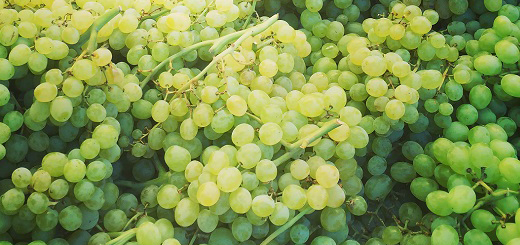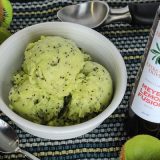Taste This: Belgian Endive Grown in California
Taste This: Belgian Endive Grown in California
Feeling in the dark about Belgian endive? Read on to learn about this mysterious vegetable.
By Carmelo Sigona
 Belgian endive became popular American party fare in the 50s. Back then, it was shipped in from Belgium and was very expensive; the well-to-doers would often come by my uncle’s produce stand asking for Belgian “on-deev” to recreate the latest and greatest hors d’oeuvres.
Belgian endive became popular American party fare in the 50s. Back then, it was shipped in from Belgium and was very expensive; the well-to-doers would often come by my uncle’s produce stand asking for Belgian “on-deev” to recreate the latest and greatest hors d’oeuvres.
As a working boy from San Fran I couldn’t imagine what these people would do with this strange little thing, or how it could begin to feed a family. Little did I know it had many uses, but we’ll get to recipes in a bit.
Today we source our Belgian endive locally from Rio Vista, Calif., about 10 miles outside of nearby Brentwood. It’s much more affordable now too!
While some say Belgian “en-dive” and others say Belgian “on-deev” (technically, it’s pronounced “on-deev”), the most important part of the proper name is actually Belgian. Endive alone is the name of an entirely different piece of produce.
Deciding on pronunciation for the vegetable may seem complicated enough, but just wait until you read about how it grows. This delicate, mildly bitter vegetable doesn’t grow in a field as most other fruits and vegetables; in short, it sprouts from the root of another plant, but only when the root is replanted in a dark warehouse.
It’s true. Really!
Belgian endive was discovered by mistake. In the 1830s, as the story goes, a chicory farmer in Brussels, Belgium, stored chicory roots indoors to dry for use as a coffee substitute (chicory flavoring is also still widely used, and is a key ingredient in a drink popular in New Orleans). The roots were left longer than normal, and to the farmer’s surprise the roots grew new sprouts, sprouts that looked nothing like leafy, green chicory, which is also known as curly endive. These new sprouts were made up of white, firm, yet tender, leaves with a mildly bitter flavor.
 The leaves of Belgian endive are white because they’re grown without sunlight (with no sun, the chlorophyll does not turn the leaves green). The red Belgian endive is also mostly white, but the red tips are a result of a cross between Belgian endive and radicchio di Treviso, a longer, leaner and leafier version of common radicchio. Though some retailers call it French endive or simply red Belgian endive, California-grown red Belgian endive is more commonly marketed red California endive.
The leaves of Belgian endive are white because they’re grown without sunlight (with no sun, the chlorophyll does not turn the leaves green). The red Belgian endive is also mostly white, but the red tips are a result of a cross between Belgian endive and radicchio di Treviso, a longer, leaner and leafier version of common radicchio. Though some retailers call it French endive or simply red Belgian endive, California-grown red Belgian endive is more commonly marketed red California endive.
There isn’t much difference in taste between the red and the Belgian endive, but the color difference does add a nice contrast when the two are used together in a dish. The leaves can also be peeled and laid individually on a platter along with jicama, celery, cucumber or carrots to be used as scoops for a dip such as hummus or guacamole. Another popular presentation is stuffed Belgian endive or Belgian endive boats. Check out the recipe for Belgian Endive Boats with Herbed Cream Cheese and Smoked Salmon.
I like Belgian endive best when eaten raw to maintain the integrity of its nutritional benefits, crunch and structure, but don’t stop there. Belgian endive is also exceptional when braised, baked, sautéed or grilled. Check out our recipe for Honey Roasted Belgian Endive from Stephanie Nuccitelli, a Sacramento-based food blogger for 52 Kitchen Adventures.
Belgian endive presents a host of nutritional benefits. It’s loaded with loaded vitamins B and C, calcium, magnesium, iron, zinc, folate and selenium. It’s also low in calories, low in sodium and low in fat. This mildly bitter vegetable is also a good source of potassium (one head delivers more than 50 percent of the potassium found in a banana) and furthermore it helps prevent the absorption of cholesterol into the blood stream.
Aren’t you glad the Brussels farmer left his chicory roots to dry too long? I know I am! Be sure to check out my nephew Robbie’s produce tips for Belgian endive too.










